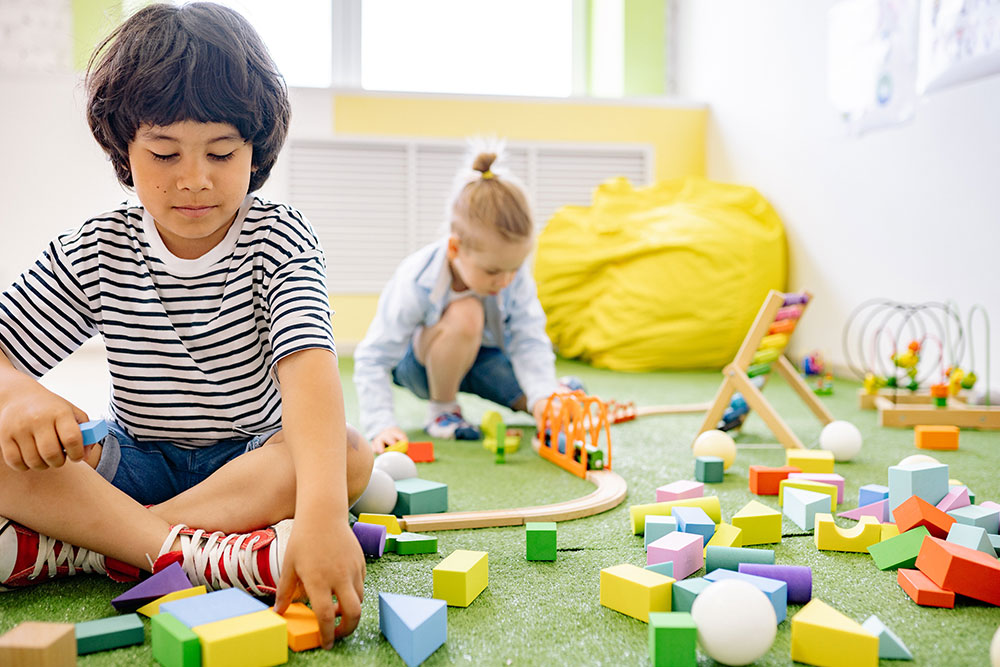Toy blocks have been a favorite in children’s playrooms for generations. They offer an open-ended play experience that children of all ages can enjoy. In recent years, toy blocks have gained popularity as a tool for teaching STEM skills (Science, Technology, Engineering, and Math).
This article will discuss the benefits of playing with toy blocks for STEM education and how they can be used to teach different concepts in these fields.
Benefits of Playing with Toy Blocks for STEM Education
Playing with toy blocks offers many benefits for developing STEM skills. First and foremost, it helps children develop problem-solving and critical-thinking skills. Children learn to identify problems and find solutions by experimenting with different block combinations, which helps develop analytical and logical thinking skills essential for success in STEM fields.
Playing with toy blocks also helps children develop spatial awareness and visualization skills. Children learn to understand concepts such as depth, size, and proportion by manipulating and arranging blocks, which are crucial for fields such as architecture, engineering, and math.
Playing with toy blocks also promotes creativity and imagination. Blocks have infinite possibilities, and children are free to build whatever they can imagine, encouraging them to think outside the box and develop unique solutions to problems.
Using Toy Blocks to Teach STEM Skills
Toy blocks can be used to teach various STEM concepts, both basic and advanced. Children can learn about gravity and force by building towers and observing how they fall when knocked over. They can also learn about simple machines, such as levers and pulleys, by building structures that incorporate these principles.
For younger children, blocks can teach basic coding and robotics concepts. For example, children can learn about cause and effect by building structures that respond to certain stimuli, such as a switch or a motion sensor.
For older children, blocks can teach more advanced technology concepts, such as circuitry and programming. Some blocks are designed specifically for this purpose, with pieces that can be connected to create circuits or even robots.
Toy blocks are an excellent tool for teaching engineering skills. For example, children can learn about structure and stability by building towers or other structures that must remain upright. They can also learn about architecture and design principles by building aesthetically pleasing and functional structures.
More advanced engineering concepts can also be taught using toy blocks. For example, children can learn about tension and compression by building structures that withstand weight and pressure. They can also learn about load-bearing capacity by experimenting with different block combinations and observing how they hold up under stress.
Toy blocks can also be used to teach various math concepts, both basic and advanced. Younger children can learn about counting and sorting by using blocks of different colors and shapes. They can also learn about patterns and sequences by arranging blocks in a certain order. Older children can learn more advanced math concepts using toy blocks such as geometry.
Conclusion
Toy blocks are an invaluable tool for developing STEM skills in children. They offer a fun and engaging way to learn and can help children develop problem-solving, critical thinking, spatial awareness, and creativity. With their versatility and wide-ranging applications, toy blocks are a must-have for any parent or educator looking to promote STEM education in children.
STEM education is becoming increasingly important in the 21st century, and the demand for STEM professionals is growing. Those with a strong foundation in STEM fields will be well-equipped to navigate future challenges.
Therefore, we must invest in our children’s STEM education; toy blocks are a fantastic tool to help us do that. We can help our children develop the skills they need to succeed in STEM fields and beyond by incorporating toy blocks into our teaching and playtime activities.
